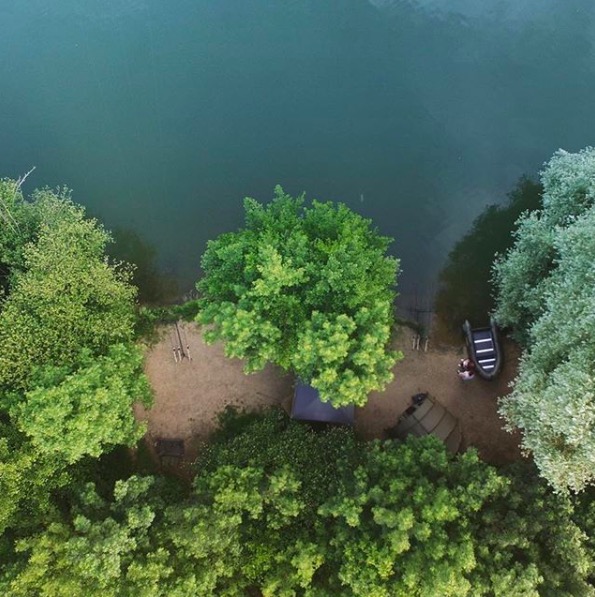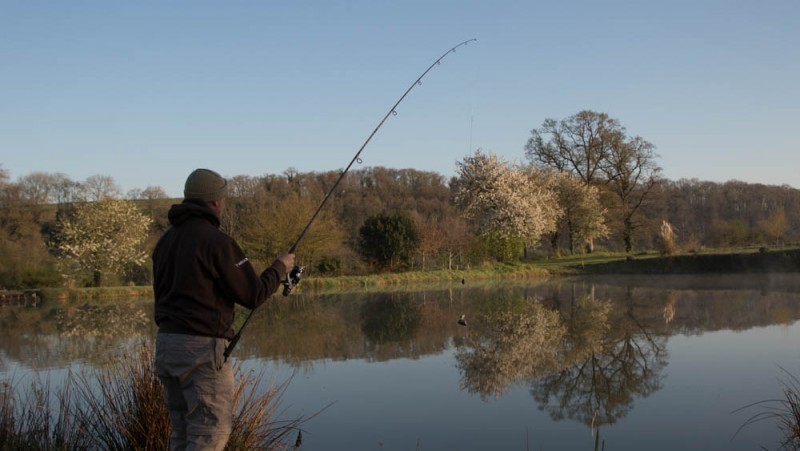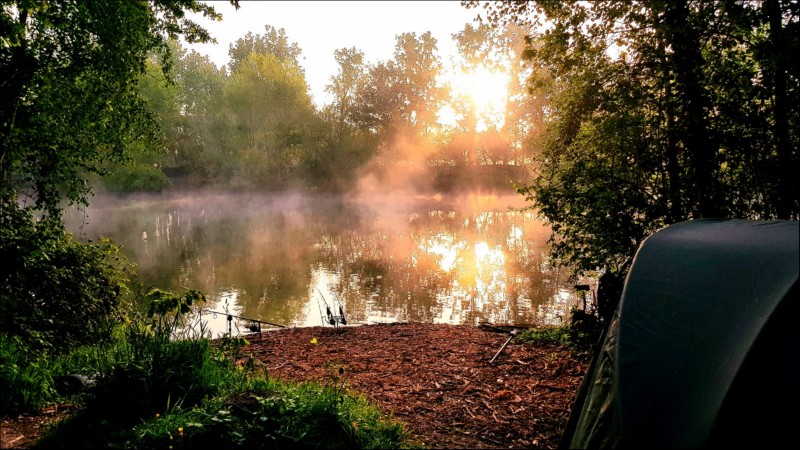With over 40 premier French carp fishing destinations under management, Angling Lines is your ‘fast track’ to your next PB. But, with visiting angler numbers on the rise, the resident carp are wising up. How can you, as a holiday angler, stack the odds in your favour?
Once upon a time, France was regarded as a Mecca for holidaying carp anglers: a place where cyprinids of biblical proportions would all but crawl their way up anglers’ lines, before hurling themselves suicidally across waiting spreader blocks. No longer.
Those big kippers are still present; indeed, they’re packing on the pounds. But they’re also a whole lot smarter. And no wonder: with more popular venues being fully booked for the greater part of the year, angler pressure can exceed that of many UK day ticket venues.
And carp respond – adversely – to pressure.

So, what’s to be done?
Well, let’s start with a definition; specifically the difference between ‘pressure’ – angler numbers – and ‘stress’: the impact of that pressure on the fish’s behaviour.
Contrary to popular belief, the latter is not an inevitable consequence of the former.
Fish respond to noise and vibration, which at best can put them on their guard; at worst pushing them out into the centre of the lake, out of casting range, or into the sanctuary of the snags.
Time, then, to get back to basics.
Simply adhering to the time-honoured principles of camouflage and stealth – wearing drab clothing, keeping noise to a minimum, staying off the skyline – will put you at a distinct and immediate advantage over the guys having the social in the peg next door.
And the further you can get away from that social – indeed, from other anglers’ lines – the better.
As an angler of advanced years – who cut his teeth on intimate ponds and drains – I never cease to marvel at many anglers’ bankside behaviour: their apparent ignorance of their impact, both visually and audibly, on their quarry.
Sure, some folk are naturally cognisant of their environment; quiet, cautious and organised; others, not so much.
And any activity in and around the lake contributes to pressure on the carp.
Setting up your bivvy, for example (step away from the mallet!). Leading around. Chatting. And of course repeated (mis)casting.
The greater the pressure, the quieter we should aim to be, across all aspects of our angling. Even baiting-up.
Spodding may be tantamount to ‘ringing the dinner bell’ on match style commercials. But on trickier holiday venues, it can be an absolute no-no.
Better therefore to use either a (love ‘em or loathe ‘em) bait boat, throwing stick or catapult. If, that is, feeding is actually necessary at all.
Consider for a moment how much bait might have been applied by the previous occupant of your swim; and where and how much of that bait might be left on the lake bed.
With this in mind, kicking off your session with small traps, in conjunction with a washed out wafter hookbait, might be more prudent.
Moreover, this softly-softly approach will enable you to try different areas; topping up the swim if you’re fortunate enough to catch, and increasing baiting levels if and as the runs continue.
As the old cliché has it: you can put it in, but you can’t take it out.

You might also consider what I like to call ‘in-session pre-baiting’. That is to say, baiting an area for a few days, and sitting on your hands: letting the carp get their heads down on your bait, without the distraction of lines in the water.
Of course, this is easier to do if space – other unoccupied swims – permits. Not so easy if you’re stuck in the same peg for the duration of your stay. In which case, it can take real nerve – and restraint – to resist fishing for a few days, having travelled 100s of miles for the privilege.
Nonetheless, prebaiting in this way can be incredibly effective; allowing carp to feed in total confidence; and ensuring their guard is down when you decide the time is right to cast in.
I’ve tried it on a number of occasions, and I can confirm: it can result in some very big hits of fish.
It can also go horribly wrong, if conditions change adversely during your stay.
Nonetheless, if you can adopt the right mindset – enjoy your holiday for its own sake, for three-four days – the results may surprise you.
And in the meantime, you can enjoy a great social – secure in the knowledge you can be as loud as you like… in someone else’s swim.
Just remember, when you finally cast in, to ensure that your line is thoroughly pinned down – all but invisible to those fish which, by now, should be feeding with gusto.
Clearly, on the majority of pressured venues, it’s the out of bounds banks and central ‘hard to reach’ areas of the lake where you’ll find the majority of the fish, due largely to the absence of lines entering the water. So concealing your end tackle will go some way to convincing the carp that your area is ‘safe’.

The use of fluorocarbon mainlines, leaders/leadcore and blobs of putty can all help to keep ‘the business end’ out of sight.
Alternatively, on venues where leaders are banned, go for a fast sinking rig tubing such as Nash’s No Spook, which is a breeze to thread and quickly blends into the carp’s natural environment.
Back leads and slack lines can also play a role, depending on the contours of the lake bed, proximity to snags, and the range at which you’re fishing.
Resting the swim after each fish can also be a real edge – allowing the carp to regain their confidence.
All of which might lead you to believe my lines are out of the water more often then they’re in. Which, come to think of it, may be true.
I firmly believe however that the most successful anglers – be they on UK circuit waters or equally pressurised holiday venues – actually ‘fish’ far fewer hours than are available to them in a given period.
To my mind, however, the trick – on ‘revolving-door’ (one angler in and one angler out) waters such as these – is knowing when (and when not) to cast in.
Master it, and you can look forward to more than a few big kippers – maybe even a PB or two – on your next trip out.
Steve Calder

Comments